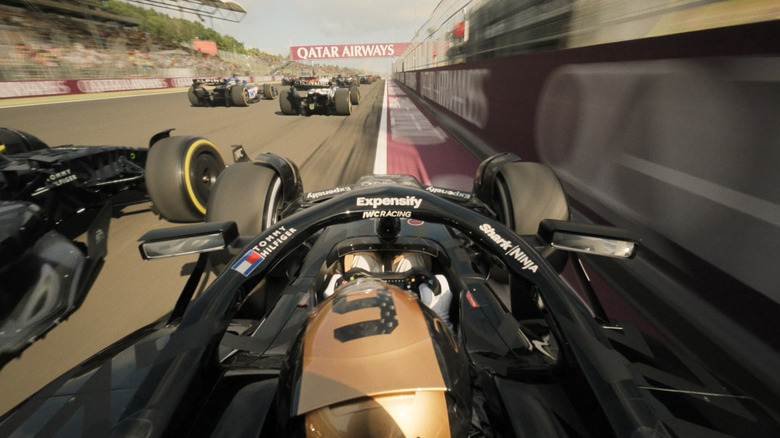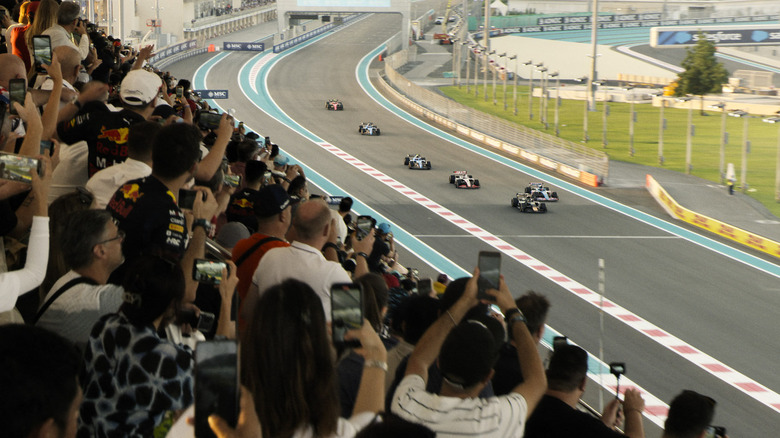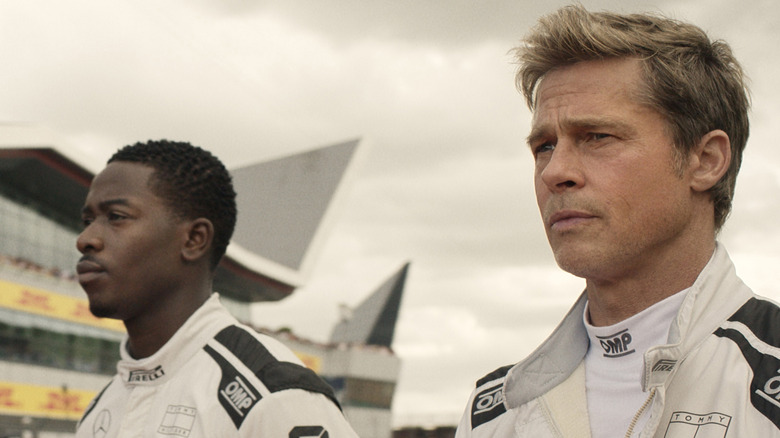Joseph Kosinski’s “F1” film is designed to welcome each seasoned followers of the game and informal moviegoers alike. In the event you’ve by no means watched a System 1 race or seen an episode of Netflix’s well-liked “Drive to Survive” collection, you will nonetheless be capable to observe the plot simply nice: Racecar goes vroom vroom, Brad Pitt desires to win, and so forth. However there’s additionally a superb little bit of System 1 jargon scattered all through the movie that the script would not exit of its solution to clarify.
A part of what makes “F1” so enjoyable is that it reveals like to the entire sport of racing, not simply System 1. That specific league is handled as the head of the game, to make certain, however we additionally get some nice scenes that includes occasions just like the 24 Hours of Daytona and the Baja 1000. In the event you’ve ever seen a NASCAR race, you will have a leg up on this film over somebody who’s by no means been to a monitor earlier than. However even then, System 1 is a extremely specialised type of auto racing, and it has loads of distinctive quirks.
From “soiled air” to the DRS zone, let’s get you caught up on a number of the fundamental phrases and racing rules earlier than you see “F1.”
Field, DRS, and different System 1 terminology
Whereas “F1” is a really accessible film, it would not give any huge exposition dumps explaining System 1, the format of the season, how race weekends are structured, or the mechanical particulars referenced at factors all through the movie. As you watch, you will choose up a wide selection of lingo, so let’s run via a few of it shortly and provides a couple of definitions:
-
Field — A slang time period referring to the pit lane. When a driver or their racing crew says “field this lap,” or one thing related, they’re calling for a pitstop to alter tires and refuel.
-
DRS — Stands for Drag discount System. This refers to part of the automotive’s rear wing that may open up like a collection of slots to scale back wind resistance and thereby enhance pace. DRS can solely be activated on designated areas of every monitor when a driver is inside one second of the motive force in entrance of them. It’s a mechanic designed to make it simpler to go on straightaways, making races extra thrilling.
-
Soiled Air — Air that has not too long ago been disturbed by different vehicles. Soiled air in corners is usually a downside for the trailing driver as there may be much less stationary air to offer downforce (and, subsequently, grip) for the aerodynamics of the automotive. Soiled air in straights, alternatively, is named “slipstream” and may truly be useful for the trailing automotive in its makes an attempt to go.
-
Tow — The impact of being pulled in by a number one automotive whereas slipstreaming, gaining some pace.
-
Gentle/Medium/Arduous tires — Every race of the season designates three tire hardnesses from a complete of six, in addition to “intermediates” and “wets” for wet races. Every driver should use at the least two totally different tire compounds over the course of a race.
-
P1, P2, and so forth. — Refers to a driver’s place in a race (first place, second place, and so forth.).
-
Chicane — A curvy, usually s-formed part of a monitor.
-
Security Automotive — A automotive that drives onto the monitor after minor collisions, accidents, or monitor disruptions to maintain racers below a slower tempo and forestall passing whereas the difficulty is handled.
-
Pole Place — The lead beginning place for a race, earned in qualifying.
-
The Grid — The association of beginning packing containers the place vehicles start the race. Used as slang in the identical method “pitch” or “discipline” could be utilized in different sports activities.
How the F1 film makes use of actual System 1 ideas within the story
Now that you realize a number of the verbiage, a whole lot of the race moments in “F1” might make much more sense. The characters Sunny (Pitt) and Joshua Pearce (Damson Idris) seek advice from the “tow” at numerous factors within the movie, for example, whereas driving collectively as a crew, with the lead automotive serving to to reinforce the one behind. The film additionally options an actually weird variety of security vehicles because of Sunny’s extremely questionable, aggressive driving fashion.
Along with the precise terminology, there are some core race ideas that can assist you perceive the story of the movie a bit higher. In System 1, every crew fields two drivers in the identical automotive design, however solely the highest 10 of the 20 drivers on the grid earn factors for his or her groups. First place (or P1) will get 25 factors, second will get 18, and third will get 15, however the numbers drop off dramatically, with solely 4 factors for eighth place, two factors for P9, and a single level for P10.
The extra you perceive about how System 1 truly works, the extra it’s possible you’ll understand that the precise plot of “F1” would not make a complete lot of sense. The methods through which Sunny and JP are in a position to eke out underdog performances could be extremely troublesome in the true world of F1 racing, and a few key bits of the game, like qualifying, are ignored altogether. Nonetheless, “F1” is a enjoyable trip, with a whole lot of love paid to one of the vital thrilling competitions on the planet.
“F1” is now taking part in in theaters.






